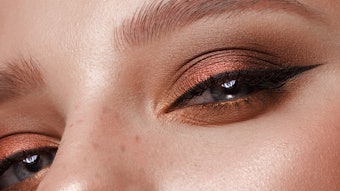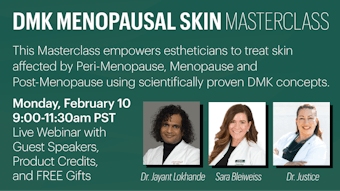The appearance of aging depends on many factors. Genes, diet, health, lifestyle and mental state all contribute to how you appear to the outside world. With advances in the fields of cosmetic surgery and dermatology, there is now a better understanding of anatomical and biological changes in the aging face, and, thus, there is an opportunity to anticipate these changes and take preventive measures. As more people seek cosmetic surgery for rejuvenation, a stronger emphasis should be placed on treatments to delay the appearance of aging and negate the need to turn to drastic surgical procedures. More importantly, by adhering to some simple prevention principles, individuals can ensure they will look their best at any age.
Case by case
In treating patients who seek to look younger, it is essential to assess individual needs based on each person’s unique characteristics. Some will show early hollowing under the eyes and around the mouth, or have sun damage and wrinkles, while others may show early sagging of the facial structures. Understanding these manifestations of aging has led me to formulate an age-appropriate approach to facial rejuvenation that utilizes a combination of noninvasive and minimally invasive treatments. Used together properly, these treatments can help delay the aging process and enhance the appearance at any age.
The secret to age-appropriate rejuvenation is to understand the role of each treatment modality as a preventive tool and provide a combination of therapies that will address specific areas of concern in each age group. Of course, healthy aging starts with a healthy lifestyle, and seeking physical and mental well-being are paramount. But below are some modalities that, used in the proper context,
serve as important anti-aging tools.
Skin care
Signs of aging begin with the condition of the skin itself. Sun damage, environmental factors and overall physical and mental health contribute to the health of the skin. Therefore, age prevention should start with proper skin care. Younger patients may require products that focus on prevention and maintenance and might need to address hyperactive glands and acne using treatments such as glycolics and sunscreens. More mature patients require more intensive agents, such as retinoids and vitamin C, to gradually resurface the skin and decrease sunspots and wrinkles.
Proper protection from ongoing sun exposure and appropriate topical care will help maintain skin’s inherent elasticity, tightness and clarity, which in turn, aids in keeping it clear and healthy. It is also important to remember that the science of skin care is always evolving, and newer products are constantly coming onto the market. As providers, reviewing the scientific premise of a product and incorporating your clinical experience in assessing if a particular product is appropriate for each individual is important in helping a patient receive the proper skin care.
Botox
Botox* is chemical product that is used to prevent or treat dynamic wrinkles. Dynamic wrinkles are formed by the strong action of a particular facial muscle and can lead to permanent wrinkles. The key to appropriate Botox use is to have a good understanding of facial anatomy and to recognize areas of concern before the wrinkles become permanently etched in the skin. Unfortunately, in an effort to eliminate wrinkles, Botox commonly is misused and has been known to cause a masked and unnatural appearance. One needs to keep in mind that facial movement is a natural process that needs to be preserved.
It also is important to remember that the earlier one treats a hyperactive muscle, the better the ultimate outcome. Low-dose Botox therapy is a good tool when addressing dynamic wrinkles. However, in more mature patients where the dynamic wrinkles have become permanent, fillers may also be needed.
Fillers and fat transfers
Fillers are a group of products that are injected into wrinkles and areas of hollowing. The differences in various types of fillers are usually a reflection of their biochemical properties, such as molecule size and how long they last. Most hyaluronic acid fillers last about six months, and within each brand different molecule sizes are available. Smaller molecules are better utilized for superficial wrinkles, whereas larger molecule products are more suitable for deeper injections.
Fat is one type of filler, and it is available in every individual. A person’s own fat can be taken from an unwanted area to help fill and prevent aging changes in the face and hands. Areas around the eyes, cheeks, mouth and chin can be discreetly addressed in this fashion without visible scars or significant swelling. Also, due to a high content of stem cells, fat transfers initiate a rejuvenation chain reaction that enhances the quality of the skin itself. Fat injections usually require only local anesthesia and occasional oral sedatives, and bring on mild to moderate swelling that goes down over one to two weeks. They also only typically produce tiny, well-hidden scars.
The advantages of fat transfers over other injectable fillers is that approximately half of the injected fat cells will survive for several years, they have a more natural texture and feel, and larger volumes can be injected at the same time. Fillers may be a better choice for treating some younger patients’ superficial wrinkles or when an older patient cannot tolerate a few days of swelling. Also, if a patient requires multiple syringes of filler at a time, then fat may be a better option from a texture and feel, as well as a cost, standpoint.
This less-invasive method can be more acceptable to younger patients in their 30s and 40s who would otherwise not want invasive surgery. As such, patients not only will look better at a younger age, but will also benefit from the preventive effect of early filling.
Radio frequency
Radio frequency is a noninvasive procedure that targets a deeper layer of the skin and is best suited for individuals who have a minimal amount of laxity and early sagging. It is less effective in addressing more advanced signs of aging, but by promoting collagen synthesis and contraction, younger patients can use it as a preventive measure to counter the ongoing sagging and thinning of the skin.
This procedure is without any visible changes at the time of treatment but can be done without any recovery period. Patients will notice a gradual improvement of the skin in the one to two months following the procedure. More than one treatment may be needed to achieve visible or tactile results, and one treatment every three to five years will enhance skin appearance and promote preventive collagen deposition to counter aging.
Laser and light-based therapy
In general, lasers and light-based therapies address problems in the superficial layer of the skin. Lasers can be used to address difficult pigmentation problems, such as age spots, that do not improve with basic skin care and peels. They also can be used for skin resurfacing and to improve overall skin quality. However, they usually require a significant recovery period. Light-based modalities such as intense pulsed light (IPL) are less invasive than lasers and help improve pigments and general skin condition after multiple treatments.
Skin transformation
Continuous use of one or a combination of these preventive tools and patients’ skin can be transformed from wrinkled and sagging to a healthy appearance of youth and vitality. While it is very important to recommend treatment on a person-by-person basis, it also is helpful to know which procedures work best for a particular age group. Whether it be with regular skin care and radio frequency or fillers and light-based therapy, utilizing these minimally invasive treatments can help patients turn back the clock without having to turn to the knife.










